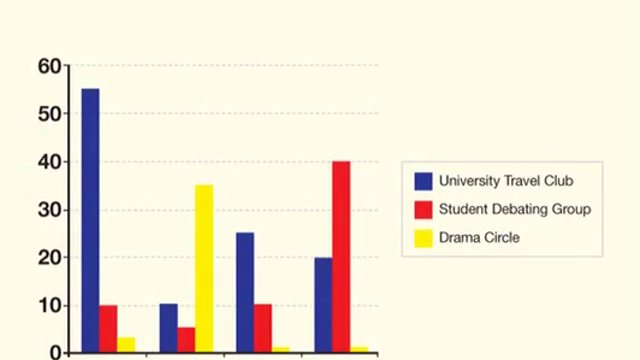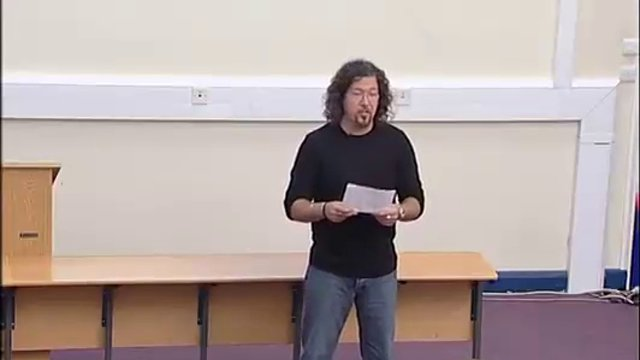
Unit 5, Video 1 – Referring to visual aids 1 (Exercise 6.1)
Click here for supplementary interactive exercises
Excerpt 1
As I mentioned earlier, this year we’ve seen a considerable increase in our international student memberships. Let’s look at which countries these students are coming from and which clubs and societies they’re choosing to join.
Excerpt 2
This graph shows all the international students currently studying at the university. The vertical axis represents the actual number of students and the horizontal axis refers to their country of origin. As you can see, most international students are coming from four key areas: China, Japan, Nigeria, and India.
Excerpt 3
As the graph shows, the University Travel Club is still the most popular society for international students, particularly for students from China and Nigeria. But I would also draw your attention to two other societies: the Student Debating Group and the Drama Circle. As the data here indicates, the Student Debating Group is a popular choice with Indian students and the Drama Circle attracts lots of members from Japan.

Unit 5, Video 2 – Referring to visual aids 1 (Exercise 6.1)
Excerpt 1
As I mentioned earlier, this year we’ve seen a considerable increase in our international student memberships. Let’s look at which countries these students are coming from and which clubs and societies they’re choosing to join.

Unit 5, Video 3 – Referring to visual aids 1 (Exercise 6.1)
Excerpt 2
This graph shows all the international students currently studying at the university. The vertical axis represents the actual number of students and the horizontal axis refers to their country of origin. As you can see, most international students are coming from four key areas: China, Japan, Nigeria, and India.

Unit 5, Video 4 – Referring to visual aids 1 (Exercise 6.1)
Excerpt 3
As the graph shows, the University Travel Club is still the most popular society for international students, particularly for students from China and Nigeria. But I would also draw your attention to two other societies: the Student Debating Group and the Drama Circle. As the data here indicates, the Student Debating Group is a popular choice with Indian students and the Drama Circle attracts lots of members from Japan.

Unit 5, Video 5 – Referring to visual aids 2 (Exercise 6.3)
Click here for supplementary interactive exercises
Excerpt 4
So now let’s look at how international students spend their leisure time. This table provides an overview of 200 students from Newtown College in 2007. As you can see, the first column, the column on the left, shows the students’ country of origin and then the six columns on the right provide details of their different leisure activities. The points in bold represent the most popular activities for each ethnic group. As this data shows, playing computer games was rated as the most popular leisure activity for Chinese students. For the Japanese, on the other hand, the most popular activity was shopping. The Nigerians said that they liked playing sports best and finally, the Indian students responded that their favourite leisure time activity was meeting friends.

Unit 5, Video 6 – Connected speech 1 (Exercise 7.1)
Click here for supplementary interactive exercises
a) We should have started recruiting in Asia much earlier.
b) One of the new doctorate students arrived last week.
c) He came with his wife and kids.
d) Have you met him yet?

Unit 5, Video 7 – Connected speech 2 (Exercise 7.2)
Click here for supplementary interactive exercises
a) He’s an actor.
b) He’s coming next week.
c) He had a big gun.
d) She isn’t one of my students. (pause) He went to unload his car. (pause) Australia is warmer than Britain.

Unit 5, Video 8 – Connected speech 3 (Exercise 7.3)
Click here for supplementary interactive exercises
a) She needs to ask his permission.
b) He was an officer in the army.
c) Just stay there for a moment.
d) It’s a bit tight.
